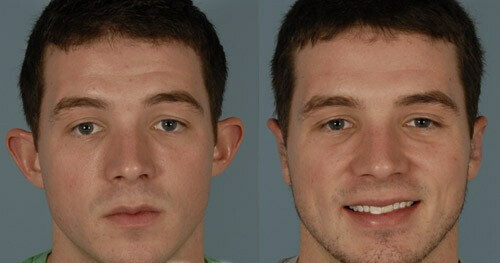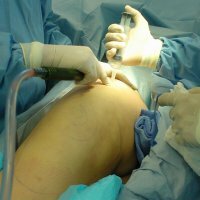Big ears: otoplasty as a way of correction

Large ears - a fairly common cosmetic defect.People with lop-eared, large ears often become the object of ridicule( especially in childhood and adolescence), experience problems in their personal lives, suffer from an inferiority complex.Fortunately, thanks to modern medicine, this defect can be corrected by making the ears neat and attractive.
Table of contents: About the causes of loparness Methods for correcting the shape of the ears, otoplasty When is otoplasty contraindicated?Preparing for surgery Types of otoplasty Rehabilitation Possible complications Additional recommendationsAbout the causes of bumpy
Large ears are not only a feature of the anatomical structure. According to doctors, the following factors may provoke this problem:
- hereditary predisposition;
- vascular pathology;
- hypertrophy of tissue structures;
- hormonal disorders;
- pathology of intrauterine development;
- neurofibromatosis;
- accelerated growth of the auricle.
Note: has a problem with large ears already in childhood.But sometimes a child's ear can be noticeably larger than another.Some experts associate this with the habit of the baby constantly sleeping on one side!
Methods for correcting the shape of the ears, otoplastics
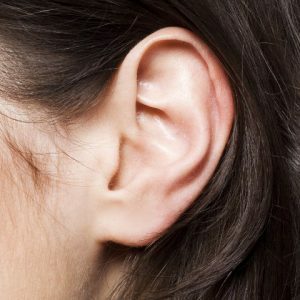 Correction of large ears is performed exclusively surgically.This surgical operation is called otoplasty.The procedure has no medical indications, it is carried out at the request of the patient, who seeks to get rid of the external defect and the accompanying psychological discomfort.
Correction of large ears is performed exclusively surgically.This surgical operation is called otoplasty.The procedure has no medical indications, it is carried out at the request of the patient, who seeks to get rid of the external defect and the accompanying psychological discomfort.
Important! Specialists recommend doing otoplasty in childhood, until the child reaches 14 years of age.It is believed that during this period, recovery is much faster, and postoperative complications are much less common!
It is possible to do otoplasty of large ears starting from the age of four, since by that time the process of the formation of the auricle is finally being completed.
Properly performed otoplasty achieves the following results:
- reduction in the size of the auricles;
- elimination of possible asymmetry;
- correction of the shape of the ears;
- elimination of the ears and bulging of the auricles.
Thus, after the operation and completion of the rehabilitation period, a person will completely get rid of the problem of large ears, improve their appearance, become more attractive and self-confident, which is extremely important for further successful life!
Note: otoplasty is not considered a complicated surgical intervention, and if you follow the basic rules of preparation for surgery and rehabilitation, do not do any harm to the patient's health!
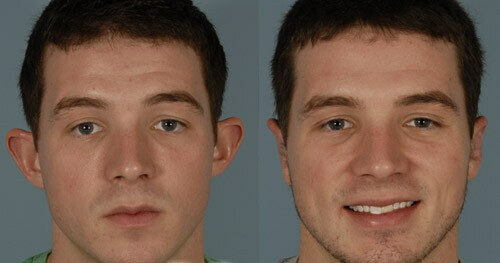
When is otoplasty contraindicated?
Like any other surgical procedure, otoplasty has a number of contraindications and limitations. Specialists do not recommend resorting to this operation aimed at correction of large ears in the following cases:
-
 diabetes mellitus;
diabetes mellitus; - diseases associated with a decrease in the coagulability of blood( hemophilia, thrombocytopenia);
- inflammatory diseases of the hearing aid that occur in acute or chronic form;
- oncological tumor neoplasms;
- infectious diseases in acute phase;
- chronic diseases, which are in the stage of their aggravation;
- menstruation in the fair sex;
- pathology of the thyroid gland;
- diseases of internal organs that occur in severe form;
- presence of keloid scars in the region of the auricle;
- autoimmune diseases;
- is a strong immune system weakening.
Important! Despite the fact that children's age is considered optimal for otoplasty, children under the age of four do not perform such an operation, due to the unformatted cartilage tissues and the auricles.At an early age, otoplasty will simply not be effective!
Contraindicated plastic surgery( including otoplasty) for women waiting for the appearance of the baby and breastfeeding mothers!
Preparing for operation
Before performing otoplasty, the specialist photographs the patient's ear shells and makes appropriate measurements. The following mandatory diagnostic tests are prescribed to the patient:
- laboratory examination of urine and blood;
- electrocardiogram;
- computed tomography of auditory organs.
Important! You must also visit a specialist such as an otolaryngologist.
The very process of preparing for a surgical intervention aimed at correction of large ears, begins 2 weeks before the operation. During this period, patients need:
- Refuse to take medications not agreed with specialists.
- Abstain from drinking alcoholic beverages, smoking.
- Take prescribed vitamin-mineral complexes.
- Eat right, giving preference to protein foods, fresh vegetables and fruits.
 The day before the operation, you need to pay special attention to hygiene, wash your hair, clean your ears.Dinner on the eve of otoplasty should be easy, and immediately on the day of surgical intervention from eating and drinking you should absolutely refrain( the last meal should be no later than 4 hours before the operation)!
The day before the operation, you need to pay special attention to hygiene, wash your hair, clean your ears.Dinner on the eve of otoplasty should be easy, and immediately on the day of surgical intervention from eating and drinking you should absolutely refrain( the last meal should be no later than 4 hours before the operation)!
Note: otoplasty can be performed under both local anesthesia and anesthesia.The decision is made by the surgeon, depending on the type of otoplasty, age and individual characteristics of the particular patient!
Types of otoplasty
In modern surgery, several methods of otoplasty are used to correct large ears:
- Eytner's method.During the surgical intervention, the specialists dissect the patient's aortic cartilage, after which the joint seams are applied.The duration of the operation on both auricles is about an hour.The method is quite effective, but it is not recommended for patients who have an increased tendency to form keloid scars.
- Method of Gerzuni.The principal difference of this type of surgical intervention is that the ear cartilage is excised under the ear curl, after which the connecting sutures are applied.After such an operation, it is possible to achieve maximum aesthetic results, with absolutely inconspicuous scars.The duration of this otoplastic procedure is about 1.5 hours.
- Laser otoplasty is a modern, minimally invasive procedure.Under the influence of laser radiation, cartilaginous ear tissues evaporate.This procedure is bloodless, painless, characterized by a minimal risk of development of infectious postoperative complications and an accelerated recovery period.
At the end of the operation, antiseptic, pressing, fixing bandages are applied to the patient's ears.
Note: method of performing otoplasty is selected by the surgeon individually!
A few hours after surgery the patient is in the clinic, under the supervision of specialists, after which, if his condition does not cause fear, he can go home!
Rehabilitation
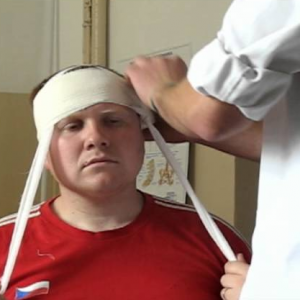 The process of full recovery after the transferred otoplasty takes several months.For 2 weeks, the patient should always wear a compression bandage, and 2 more weeks wear it only in the evening hours, before going to bed.
The process of full recovery after the transferred otoplasty takes several months.For 2 weeks, the patient should always wear a compression bandage, and 2 more weeks wear it only in the evening hours, before going to bed.
Note: swelling and bruising after otoplasty may persist for about 2 weeks, it is considered quite normal!If the patient is concerned about severe pain and other unpleasant sensations, the doctor may prescribe painkillers and antibiotics for him!
Also after surgery, cotton swabs impregnated with antiseptic agents are inserted into the ear canals.Change these tampons should be every 3 days.Sutures are usually removed after 1.5-2 weeks after surgery.However, the removal of stitches does not mean the completion of the rehabilitation period!
So, the patient should be protected from cold and drafts, protect his hearing organs from exposure to sunlight.To wash a head it is possible only in a week after removal of seams!In addition, during the one and a half months after the transferred otoplasty, the patient should avoid strong physical exertion, exercise, visits to the solarium, pool, sauna or sauna!
Important! If the temperature rises, severe pain, joint discrepancies, you should immediately seek medical help!
Possible complications
Failure to follow medical recommendations during the recovery and rehabilitation period can lead to the development of the following extremely undesirable complications:
- bruises;
- infectious processes;
- formation of keloid scars;
- phlegmon;
- Inflammation of the soft tissue;
- perichondritis;
- necrosis of cartilaginous tissue.
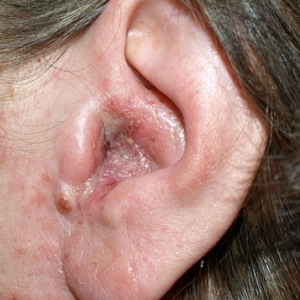 The danger of infectious complications is that they can cause the development of purulent necrosis and cartilage deformation.In such cases, the patient needs timely treatment, which will help to avoid further progression of infectious processes.Patients are draining the wound surface, prescribe a course of antibiotic therapy.
The danger of infectious complications is that they can cause the development of purulent necrosis and cartilage deformation.In such cases, the patient needs timely treatment, which will help to avoid further progression of infectious processes.Patients are draining the wound surface, prescribe a course of antibiotic therapy.
In the event that the deformation still occurred, it is necessary to conduct repeated otoplasty.With necrotic cartilage damage, surgery is performed urgently, and in other clinical cases it is recommended that otoplasty be performed after half a year after the first surgical intervention!
Additional recommendations
To prevent the development of the most common complications and to avoid the need for re-otoplasty, you can follow the following recommendations of specialists:
-
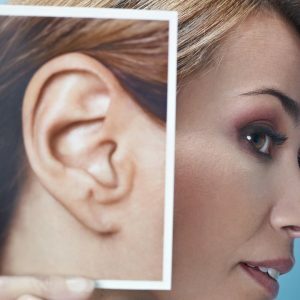 Sleep only with a fixing compression bandage for several months after surgery.
Sleep only with a fixing compression bandage for several months after surgery. - Avoid sleeping on your side, it is best to sleep on your back or on your stomach.
- Take vitamin and mineral complexes.
- Eat light, fortified food.
- Strengthen the immune system, take immunomodulating medications.
- Abstain from sunburn.
- Refuse from smoking and drinking alcoholic beverages.
- Do not take Aspirin - it can cause bleeding and slow the recovery process.In general, take any medications with your doctor.
- Use only warm( by no means hot) water for washing and washing your head!
If large ears spoil your life and appearance, ask your plastic surgeon for help, and he will tell you how to solve this problem quickly and safely!
Chumachenko Olga, medical reviewer

